Order: Passeriformes
Family: Sittidae
Genus: Sitta
Species: Sitta canadensis
Introduction
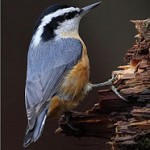
By pbonenfant [CC-BY-2.0], via Wikimedia Commons
Red-Breasted Nuthatches feed on insects and seeds, so if you have a bird feeder in your back yard, expect to see this species. They often climb up and down tree trunks to excavate food. They are all over North America, and are Washington residents all year around (Sibley 2003). At The Evergreen State College, the best place to look for these birds is at the bird feeders outside of the Sem 1 building. Sometimes this species can be seen in mixed flocks of other small Passeriformes, such as chickadees (Auster-Rosen Personal Observation). A reason that this species takes part in mixed flocks can have to do with the avoidance of predation and the help in finding food (Hobson and Wilgenburg 2006).
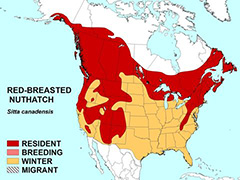
© NatureServe
Supplier: Birds of DC, National Museum of Natural History, Smithsonian Institution
Source: NatureServe
Editor: Birds of DC
Ridgely, R. S., T. F. Allnutt, T. Brooks, D. K. McNicol, D. W. Mehlman, B. E. Young, and J. R. Zook. 2007. Digital Distribution Maps of the Birds of the Western Hemisphere, version 3.0. NatureServe, Arlington, Virginia, USA.
Red-breasted Nuthatches are abundant in the Northwestern and Northeastern United States year around. They can be found in most of the western states all year long. They winter all over the east coast and in the parts of the western states where they do not spend all year. They really can be found all over the United States. They are typically nonmigratory birds, but have had to leave their territory in the Winter because lack of food. When this happens, the birds move south. This species is known to be an irruption bird, appearing in places that no one would have thought (Sibley 2001).
According to my observations around the Evergreen campus, Red-breasted Nuthatches are plentiful around the bird feeders by Sem 1, and you are likely to hear them upon entering the woods. These birds spend their time high up in the trees, so they are hard to spot but can almost always be heard from a distance away. (Auster-Rosen pers. obs.).
Red-breasted Nuthatches are very territorial all year around, although sometimes they can be spotted feeding in mixed flocks with other small songbirds. They sometimes line the cavities that they excavate with fur, feathers, or other vegetation. Very rarely will their nests be reused for more than one year (Sibley 2001).
This particular species climbs up and down trunks of trees to find insects, as well as forages in canopies of trees. The name “nuthatch” reflects the behavior in which they will take a seed and hack it upon a tree branch with its beak to get it open (Sibley 2001). They respond well to bark beetle outbreaks, not only because they eat the beetles but also because the beetles kill a lot of conifer trees, which is the Red-Breasted Nuthatch nesting area of choice (Norris and Martin 2006). This species will actually eat snow to keep hydrated during the winter. Eating snow can be beneficial because this way the bird can stay with it’s flock and also conserve energy (Hendricks 2008). They have also been observed foraging on live conifer trees, many of which had dead limbs that were prime foraging territory for this species (Weikel and Hayes 1999).
During many of my observations of Red-breasted Nuthatches, they were feeding at suet bird feeders at Evergreen. They stand on the feeder, often upside down, and peck at the feeder for a couple seconds, and then will retreat back to a nearby tree. The individual will often do this routine many times before flying away. Often when I am looking for this species, I will go straight to the bird feeders and almost always see or hear them at that location (Auster-Rosen pers. obs.).
In terms of breeding, nuthatches tend to be monogamous for a season and first start to breed at one year old. Unlike other excavating song birds, Red-breasted Nuthatches eggs are white covered with dark blotches or spots. The mother bird will incubate her eggs from eleven to twenty days and both parents help take care of the young birds. Both males and females excavate cavities for their nests in trees, they then smear sap around the entrance to keep predators away (Sibley 2001). The juveniles look very similar to the adults, both sharing similar feather structures. Before they molt one can distinguish between the juveniles and the adults, but right when the molting occurs they are indistinguishable (Banks 1970).
The Red-Breasted Nuthatch is listed as a species of least concern with an increasing population trend on the IUCN Red List.
Adams, E. M. and M. L. Morrison. 1993. Effects of Forest Stand Structure and Composition on Red-Breasted Nuthatches and Brown Creepers. Journal of Wildlife Management 57:616-629.
Auster-Rosen, R. K. 2012. Field Journal from Fall 2012 Ornithology, A. Styring and D. Roberts, Faculty. October-December 2012, Evergreen Beach, Evergreen Birdfeeders, Nisqually National Wildlife Refuge, My House pp. 1-30.
Banks, R. C. 1970. Molt and Taxonomy of Red-Breasted Nuthatches. The Wilson Bulletin 82:201-205.
Ghalambor, Cameron K. and Thomas E. Martin. 1999. Red-breasted Nuthatch (Sitta canadensis), The Birds of North America Online (A. Poole, Ed.). Ithaca: Cornell Lab of Ornithology; Retrieved from the Birds of North America Online: http://bna.birds.cornell.edu/bna/species/459
Hendricks, P. 2008. Red-Breasted Nuthatch Eating Snow. Northwestern Naturalist 89:53-54.
Hobson, K. A. and S. V. Wilgenburg. 2006. Composition and Timing of Postbreeding Multispecies Feeding Flocks of Boreal Forest Passerines in Western Canada. The Wilson Journal of Ornithology 118:164-172.
Norris, A. R. and K. Martin. 2006. Mountain Pine Beetle Presence
Renfrow, R. 2005. Range Expansion and Habitat Selection in Breeding Populations of Red-breasted Nuthatch (Sitta canadensis) in the Southeastern United States. North American Birds 59:516-523.
Robinson, P. A., A. R. Norris and K. Martin. 2005. Interspecific Nest Sharing by Red-Breasted Nuthatch and Mountain Chickadee. The Wilson Bulletin 117:400-402.
Steeger, C. and C. L. Hitchcock. 1998. Influence of Forest Structure and Diseases on Nest-Site Selection by Red-Breasted Nuthatches. The Journal of Wildlife Management 62:1349-1358.
Sibley, D.A. 2001. The Sibley Guide To Bird Life and Behavior. Alfred A. Knopf. New York.
Sibley, D.A. 2003. The Sibley Guide To Birds of Western North America. Alfred A. Knopf. New York.
Templeton, C. N. and E. Greene. 2007. Nuthatches Eavesdrop on Variations in Heterospecific Chickadee Mobbing Alarm Calls. Proceedings of the National Academy of Sciences of the United States of America 104:5479-5482.
Weikel, J. M. and J. P. Hayes. 1999. The Foraging Ecology of Cavity-Nesting Birds in Young Forests of the Northern Coast Range of Oregon. The Condor 101:58-66.
The author of this page is Rachel Auster-Rosen. She is a senior at The Evergreen State College and is currently enrolled in the program Ornithology, Fall 2012; Alison Styring and Dina Roberts Faculty. This was her first time studying birds, although she had a huge interest in them ever since she was little when she and her father would drive around New York looking for them. She is from New York City where there isn’t a large variety in birds, so she always had to go elsewhere to find ones that interested her. She hopes to open an animal rehabilitation center at some point after her college career.

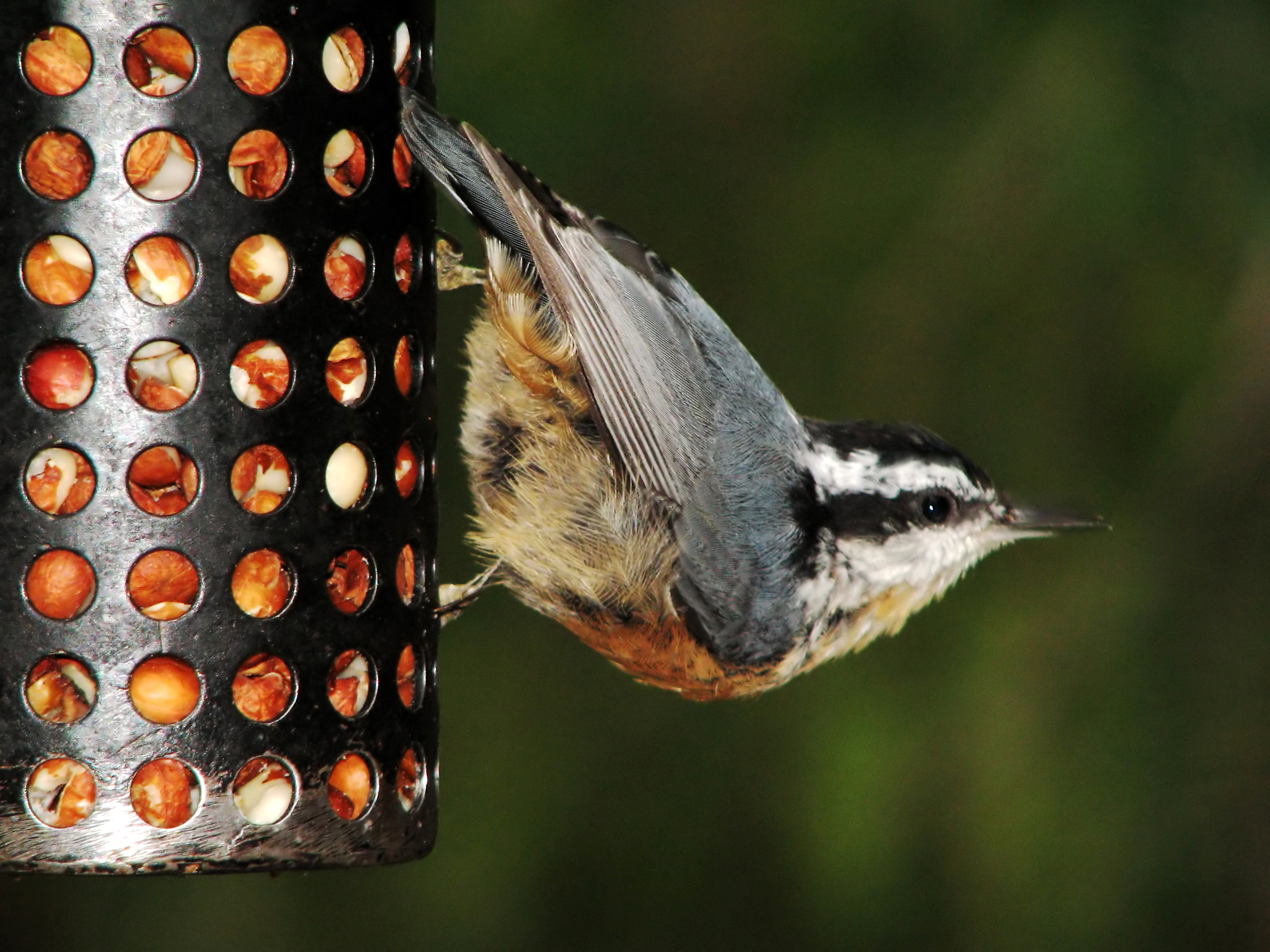
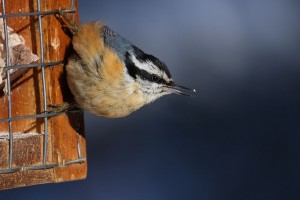
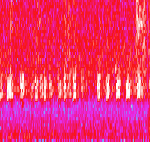
Leave a Reply